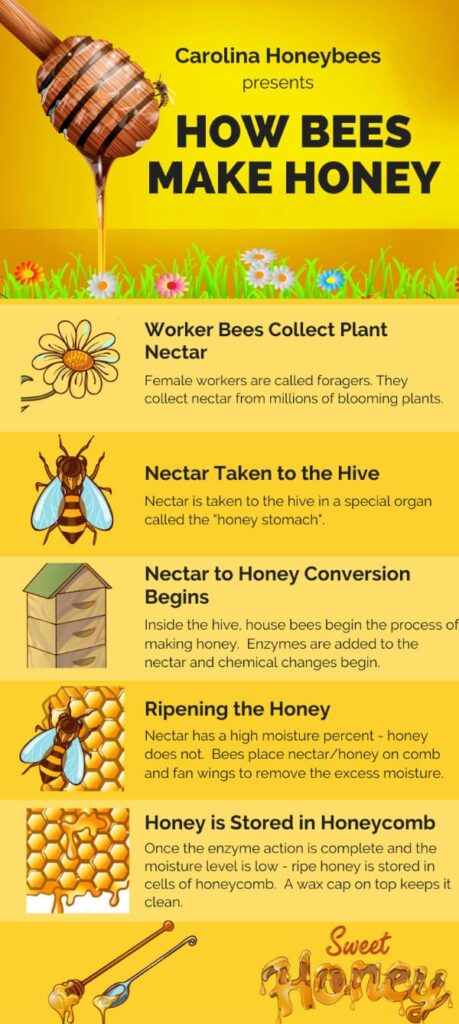
In the fascinating world of bees, have you ever wondered how these incredible insects create their delicious golden honey? It’s a captivating and intricate process that starts with the gathering of nectar from flowers. As bees flit from one blossom to another, they unwittingly become nature’s diligent pollinators, transferring pollen from plant to plant. Back in their hive, the bees then convert the nectar into honey through an enchanting alchemy of teamwork, maturation, and evaporation. Let’s uncover the mesmerizing journey of how bees transform humble nectar into the sweet liquid gold that we know as honey.
The Honey Bee Colony
The honey bee colony is a complex and organized society that plays a crucial role in our ecosystem. It consists of thousands of individual bees, each with their own specific tasks and responsibilities. Understanding the hive structure and the honey bee lifecycle can provide fascinating insights into how these remarkable insects create honey.
The Hive Structure
A honey bee colony consists of three types of bees: the queen, the workers, and the drones. the hive itself is carefully constructed to provide shelter, protection, and efficient honey production. It is divided into multiple compartments, each serving a specific purpose.
At the heart of the hive is the brood chamber, where the queen lays her eggs. This area is insulated and kept at a constant temperature to ensure the development of healthy brood. Surrounding the brood chamber are the honeycomb cells, which serve as storage units for honey, pollen, and larvae.
The entrance of the hive is guarded by worker bees, who regulate the airflow and protect the colony from intruders. The overall structure of the hive is meticulously maintained by the industrious bees, who construct honeycomb walls using beeswax secreted from their bodies.
The Honey Bee Lifecycle
The lifecycle of a honey bee is truly remarkable. It starts with the queen laying eggs in the honeycomb cells. These eggs hatch into larvae, which are cared for by nurse bees. The larvae are fed a special secretion called royal jelly, which helps them grow and develop.
As the larvae mature, they undergo several molting stages before finally pupating and emerging as adult bees. The queen bee has the longest lifespan of all the bees in the colony, while the drones have the shortest lifespan.
Worker bees, which make up the majority of the colony, have a lifespan of only a few weeks during the summer months. However, they play a vital role in honey production, foraging for nectar, and performing various tasks within the hive.
The Honey Bee’s Nectar Collection Process
The process of collecting nectar is a crucial step in honey production. Bees are expert foragers and have developed a highly efficient system for sourcing and transporting nectar to the hive.
Nectar Source Selection
Bees are selective in their choice of nectar sources. They are attracted to flowers that produce an abundance of nectar, and they have excellent color vision, allowing them to identify flowers that are rich in nectar.
The bees’ preference for certain flower species can also be influenced by factors such as fragrance and accessibility. Bees are known to have preferences for certain flower colors, such as purple and blue, which are often associated with higher concentrations of nectar.
Nectar Collection
Once a suitable nectar source has been identified, the bees use their specialized tongue, called a proboscis, to extract the sweet liquid from the flowers. They store the nectar in their honey stomach, a separate compartment of their digestive system specifically designed for this purpose.
Bees are known to visit thousands of flowers in a single day, collecting small amounts of nectar from each one. Despite their tiny size, they are incredibly efficient in their collection efforts, making multiple trips between the flowers and the hive to gather sufficient nectar for honey production.
Transporting Nectar to the Hive
Once the bees have collected nectar from various flowers, they return to the hive to deposit their precious cargo. At the hive, they regurgitate the nectar into the mouth of another bee, a process known as trophallaxis.
During trophallaxis, the nectar is further treated with enzymes from the bees’ glandular secretions. These enzymes begin the process of breaking down complex sugars in the nectar into simpler sugars, making it easier to process into honey.
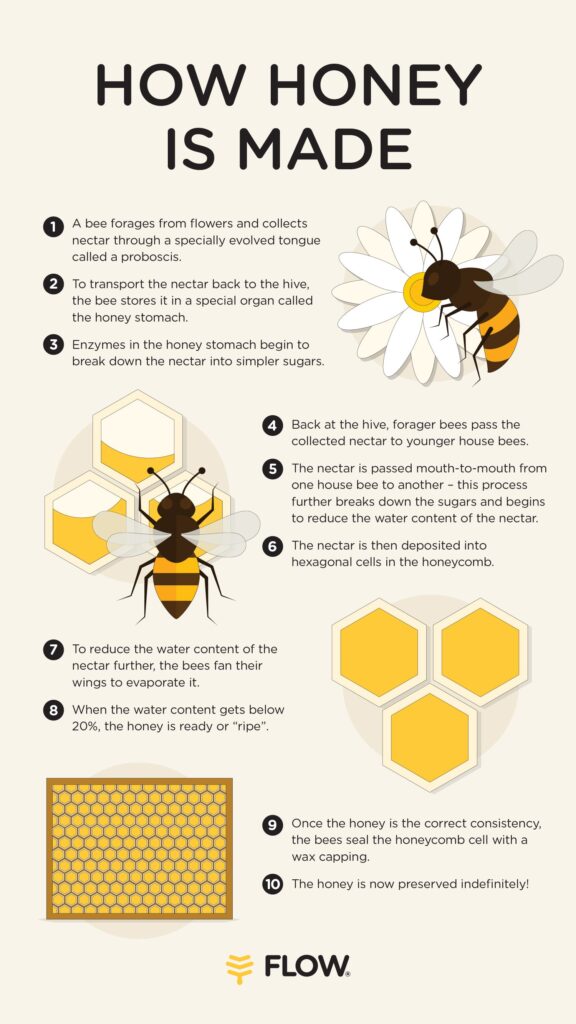
Processing Nectar into Honey
The transformation of nectar into honey is a fascinating process that involves several stages of enzymatic activity, evaporation of water, and the ripening of nectar.
Enzyme Addition
Upon receiving nectar from the forager bees, the house bees add additional enzymes to the mixture. These enzymes, such as invertase, amylase, and glucose oxidase, are produced by the bees themselves and help convert the nectar’s sugars into more stable forms.
The role of these enzymes is essential in the transformation of nectar into honey, as they break down complex sugars into simpler sugars, such as fructose and glucose. This enzymatic action contributes to the chemical and physical changes that occur during honey ripening.
Water Evaporation
After the addition of enzymes, the house bees spread the nectar throughout the honeycomb, increasing its surface area and facilitating the evaporation of water. Bees flap their wings vigorously to create air currents, which help in the drying process.
As the nectar loses moisture, its water content decreases from around 80% to below 20%. This reduction in water content is crucial for the preservation and stability of honey, as high water content can lead to spoilage and fermentation.
Ripening of Nectar into Honey
The final stage in the processing of nectar into honey is ripening. During this phase, the bees seal the almost dried nectar within the honeycomb cells using beeswax. This seal protects the honey from external contaminants and further water absorption.
The ripening process involves a complex series of chemical changes within the honey, including the concentration and breakdown of sugars, the production of antibacterial substances, and changes in pH levels. These transformations contribute to the unique taste, aroma, and texture of honey.
Honey Storage and Utilization
Once the honey has been ripened and sealed within the honeycomb cells, it is ready for storage and utilization within the hive.
Honeycomb Formation
The honeycomb is a remarkable architectural feat created by the bees using their wax-producing glands. The hexagonal shape of the cells provides strength and efficiency, allowing for maximum storage capacity.
Worker bees meticulously construct the honeycomb structure, ensuring that each cell aligns perfectly with the others. The resulting honeycomb is a true masterpiece of nature’s engineering, capable of safely holding the precious honey until it is needed.
Honey Comb Sealing
To protect the honey from outside elements, the bees seal the honeycomb cells with a thin layer of beeswax soon after filling them with ripened honey. This seal serves as a protective barrier against moisture, bacteria, and other potential contaminants.
The wax seals also contribute to the overall structural integrity of the honeycomb, maintaining the stability and strength of the cells. This sealing process is essential in safeguarding the quality and longevity of the stored honey.
Feeding and Consumption of Honey
Honey serves as the primary food source for the honey bee colony. During times of scarcity, such as winter or periods of limited nectar availability, bees rely on the stored honey within the hive to sustain themselves.
worker bees consume honey and then regurgitate it to feed other members of the colony, including larvae and the queen. The stored honey provides essential nutrients and energy for the bees to survive and carry out their various tasks within the hive.
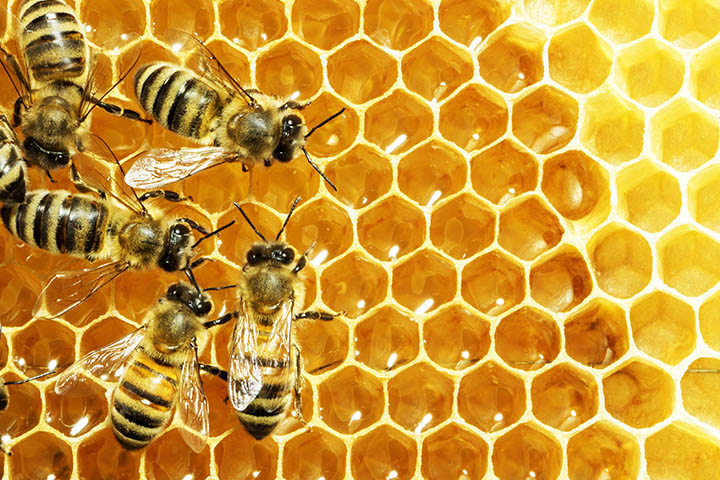
Honey Bee Communication in Honey Production
effective communication is vital in honey production, allowing bees to coordinate their efforts and optimize honey collection and storage.
Dancing to Communicate Nectar Source
One fascinating method of communication among honey bees is the dance language. When a forager bee returns to the hive after finding a rich nectar source, it performs a unique dance on the vertical comb surface.
By performing this intricate dance, known as the waggle dance, the forager bee communicates the direction and distance of the nectar source to her nestmates. Through precise movements and vibrations, the dance conveys valuable information, enabling other bees to locate and exploit the same nectar source.
Phytochemical Communication in Honey Making
In addition to the waggle dance, honey bees rely on chemical communication to coordinate honey production. Flowers produce unique chemical compounds called phytochemicals, which can be detected by honey bees.
When honey bees collect nectar from flowers, they inadvertently pick up these phytochemicals. These chemical compounds provide important cues to other bees about the quality and availability of nectar sources.
Through the detection and recognition of these chemical signals, bees can communicate information about the most rewarding nectar sources, enabling the colony to focus its foraging efforts and maximize honey production.
Harvesting Honey
Harvesting honey is an art in itself, and beekeepers play a crucial role in ensuring the successful extraction of honey from the hive.
Beekeeper’s Intervention
Beekeepers carefully observe the hive and monitor the honey production process. They understand the optimal time for honey extraction and intervene when necessary to protect the bees’ health and well-being.
Beekeepers take measures to prevent the overcrowding of honeycomb cells, which can hinder the bees’ productivity. They may add additional honeycomb frames or provide extra space when needed, ensuring that the bees have sufficient room to store honey.
Beehive Opening
To harvest honey, beekeepers must open the hive and carefully remove the honey-filled frames from the honeycomb. While doing so, they must handle the frames with care, minimizing disruption to the bees and their environment.
The beekeeper may use smoke to calm the bees and reduce their defensive response during the hive opening process. It is essential to strike a balance between obtaining the honey and minimizing stress on the colony.
Honey Extraction
Once the frames are removed from the hive, the honey extraction process begins. Beekeepers typically use a centrifugal extractor, which uses centrifugal force to separate the honey from the honeycomb cells.
The frames are placed in the extractor, and it is spun rapidly, causing the honey to be flung out of the cells. The honey then collects at the bottom of the extractor and can be drained out through a tap.
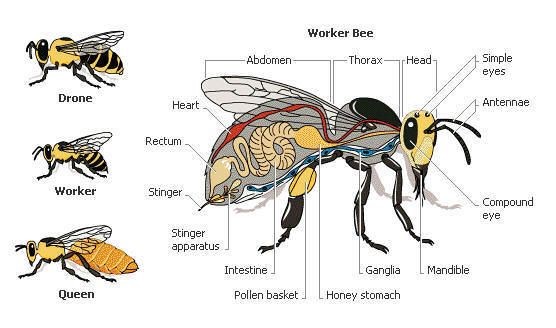
Honey Bee Health and Honey Quality
Maintaining the health of honey bees is crucial for the production of high-quality honey. Several factors can impact honey bee health and, subsequently, honey quality.
Health Impact on Honey Production
The overall health and well-being of honey bees directly influence their ability to forage, collect nectar, and ultimately produce honey. Diseases, parasites, pesticides, and environmental factors can all have a significant impact on the health of honey bee colonies.
Beekeepers play a vital role in monitoring and maintaining the health of their colonies. Regular inspections, disease management strategies, and providing a suitable environment with ample food sources are essential for supporting healthy honey bee populations and ensuring consistent honey production.
Factors Influencing Honey Quality
Several factors contribute to the quality of honey. The nectar sources, climatic conditions, and the processing methods employed all play a role in determining the flavor, color, aroma, and texture of honey.
The floral source of the nectar greatly influences the characteristics of the honey. Different types of flowers produce nectar with distinct flavors and aromas, resulting in a wide variety of honey flavors, such as clover honey, orange blossom honey, and wildflower honey.
Climatic conditions can also influence honey quality. Bees produce different types of honey during different seasons, as the nectar composition and availability change. Extreme weather events, such as drought or excessive rain, can impact the availability of nectar, leading to variations in honey production.
The honey extraction and processing methods employed by beekeepers can also affect the quality of honey. Gentle handling, minimal heating, and filtration methods that retain the natural characteristics of honey contribute to higher-quality products.
Honey Bee Conservation and Global Honey Production
Honey bees play a vital role in maintaining ecosystems and supporting global honey production. Understanding the importance of bees to ecosystems and the global honey industry is crucial for their conservation.
Importance of Bees to Ecosystems
Bees are important pollinators, facilitating the reproduction of numerous plant species. They play a significant role in agriculture, ensuring the pollination of crops that provide food for both humans and wildlife.
Additionally, bees contribute to the biodiversity of ecosystems by pollinating wildflowers and supporting the reproduction of flowering plants. Their actions contribute to the overall health and sustainability of ecosystems worldwide.
Honey Production Worldwide
Honey production is a thriving industry globally, with diverse flavors and varieties of honey being produced in different regions. Countries like China, Turkey, the United States, and Russia are among the top honey-producing nations.
The honey industry provides economic opportunities and livelihoods to beekeepers and contributes to local economies. Additionally, the production and export of honey contribute to international trade and the availability of honey worldwide.
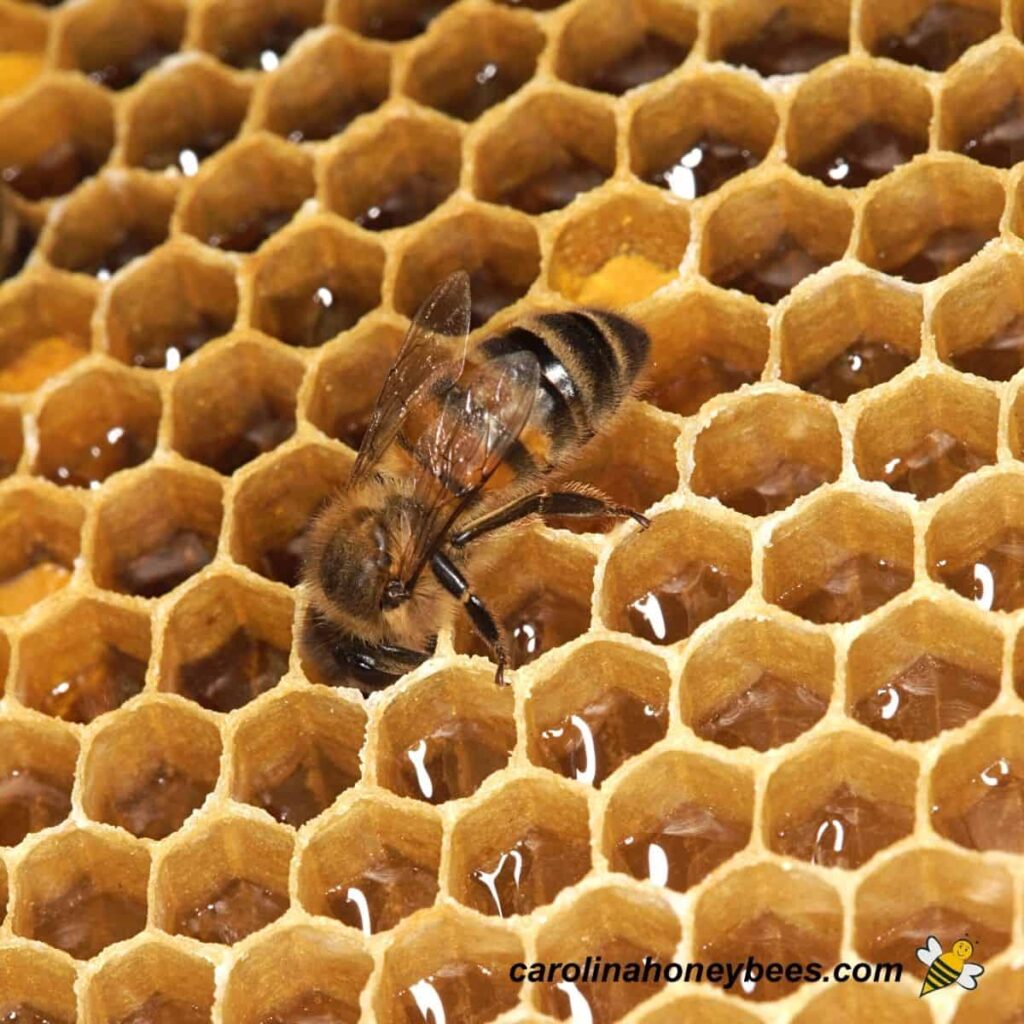
Alternative Methods of Obtaining Honey
While traditional beekeeping methods have been the primary means of obtaining honey for centuries, there are alternative approaches to honey production that have gained popularity in recent years.
Artificial Beehives and Honey Production
Artificial beehives, such as observation hives or urban beehives, offer a unique opportunity for honey production in urban and controlled environments. These hives are designed to provide a safe and suitable habitat for bees, allowing for honey production in locations where traditional beekeeping may not be feasible.
Urban beehives are particularly popular in cities, where bees help pollinate urban gardens and provide educational opportunities for communities. These alternative methods of honey production can contribute to local honey supplies and raise awareness about the importance of bees.
Bee-Free Alternatives
For individuals who prefer not to consume honey derived from beekeeping, there are bee-free alternatives available on the market. These alternatives, such as plant-based syrups or sweeteners, mimic the taste and texture of honey without involving bees in the production process.
While these alternatives may not have the exact flavor profile of honey, they offer an ethical option for consumers who wish to avoid animal-derived products while still enjoying sweeteners similar to honey.
Uses and Benefits of Honey
Honey has been used for centuries for its diverse culinary, medicinal, and therapeutic properties. Its unique composition and flavor make it a versatile ingredient with numerous applications.
Culinary Applications
Honey is renowned for its natural sweetness and rich flavor, making it a popular ingredient in various culinary preparations. It can be used as a natural sweetener in beverages, desserts, and baked goods, providing a unique, distinct taste.
Honey also finds its way into savory dishes, where it adds depth and complexity to certain sauces, marinades, or glazes. Its versatility in the kitchen makes it a favorite among chefs and home cooks alike.
Medicinal and Therapeutic Uses
Honey has long been recognized for its medicinal and therapeutic qualities. It is known for its antibacterial properties, which can help promote wound healing and prevent infections.
Honey is also used as a natural cough suppressant and sore throat remedy. Its soothing properties and ability to coat the throat can provide relief from coughing and discomfort.
Many people also use honey as a natural skincare ingredient, as it nourishes and moisturizes the skin. Its antioxidant properties can help protect against free radicals and promote healthier skin.
In conclusion, the honey bee colony, with its elaborate hive structure and intricate honey production process, represents a marvel of nature’s ingenuity. The bees’ meticulous foraging, processing, and communication efforts result in the golden, delicious honey we enjoy.
Understanding the honey bee lifecycle, the nectar collection process, and the various stages involved in transforming nectar into honey provides us with a deeper appreciation for the efforts of these remarkable insects. Furthermore, recognizing the significance of honey bees in ecosystems, their importance to global honey production, and the alternative methods available allows us to protect and support these invaluable pollinators. So, next time you savor a spoonful of honey, remember the fascinating journey it took to reach your table.
